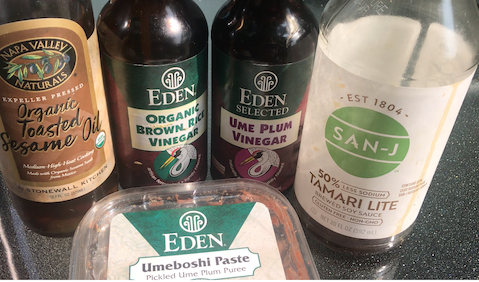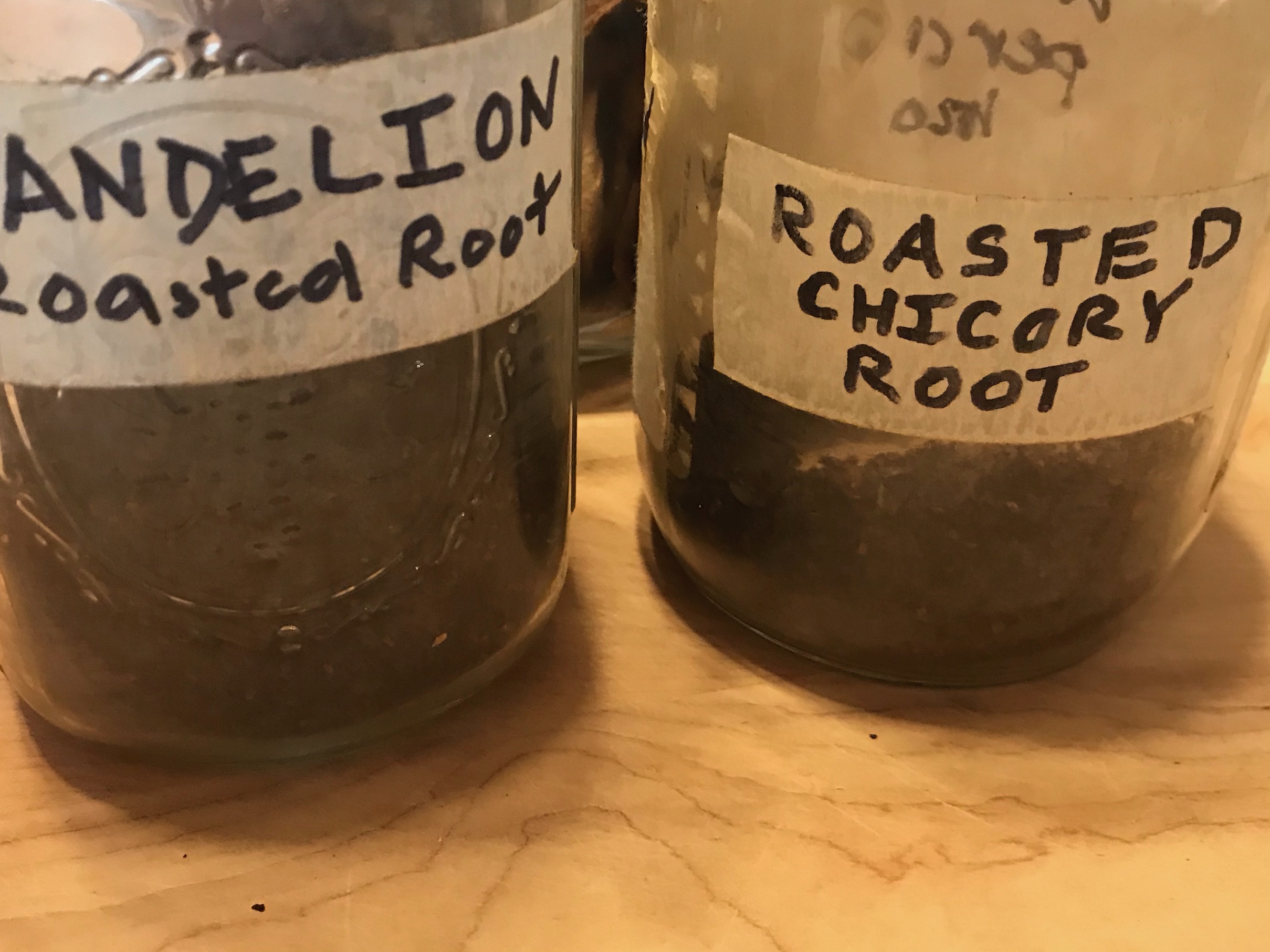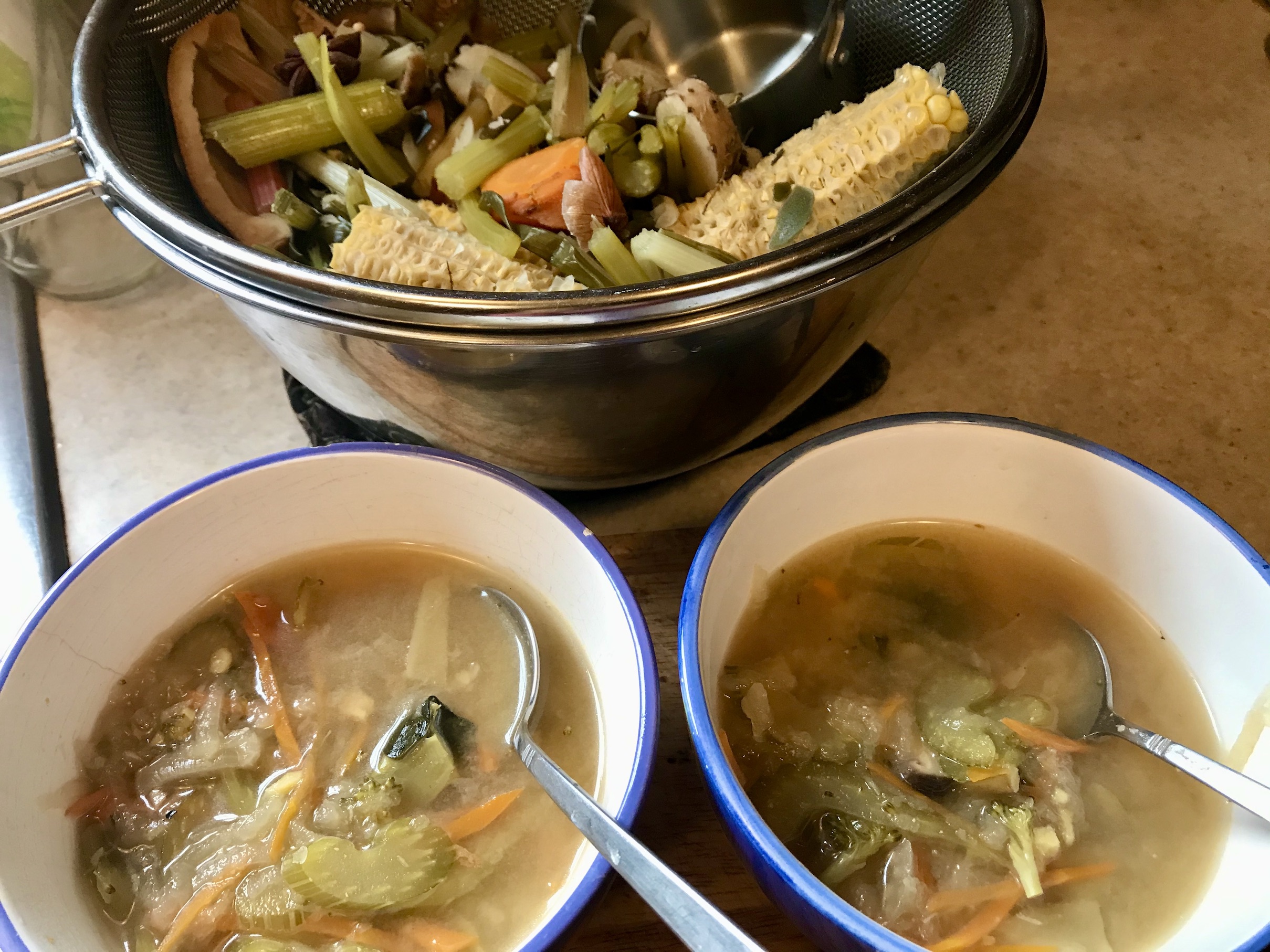Ume Sho Kudzu Tea - Macrobiotic Healing Remedy To Improve Vitality
Ume Sho Kudzu Tea ~ sometimes referred to as Morning Tea ~ is a classic macrobiotic healing remedy that can be taken daily, ideally first thing in the morning. The tea combines salty and sour elements, and can be drunk daily to boost vitality. Ingredient quantities are adjusted according to personal needs.
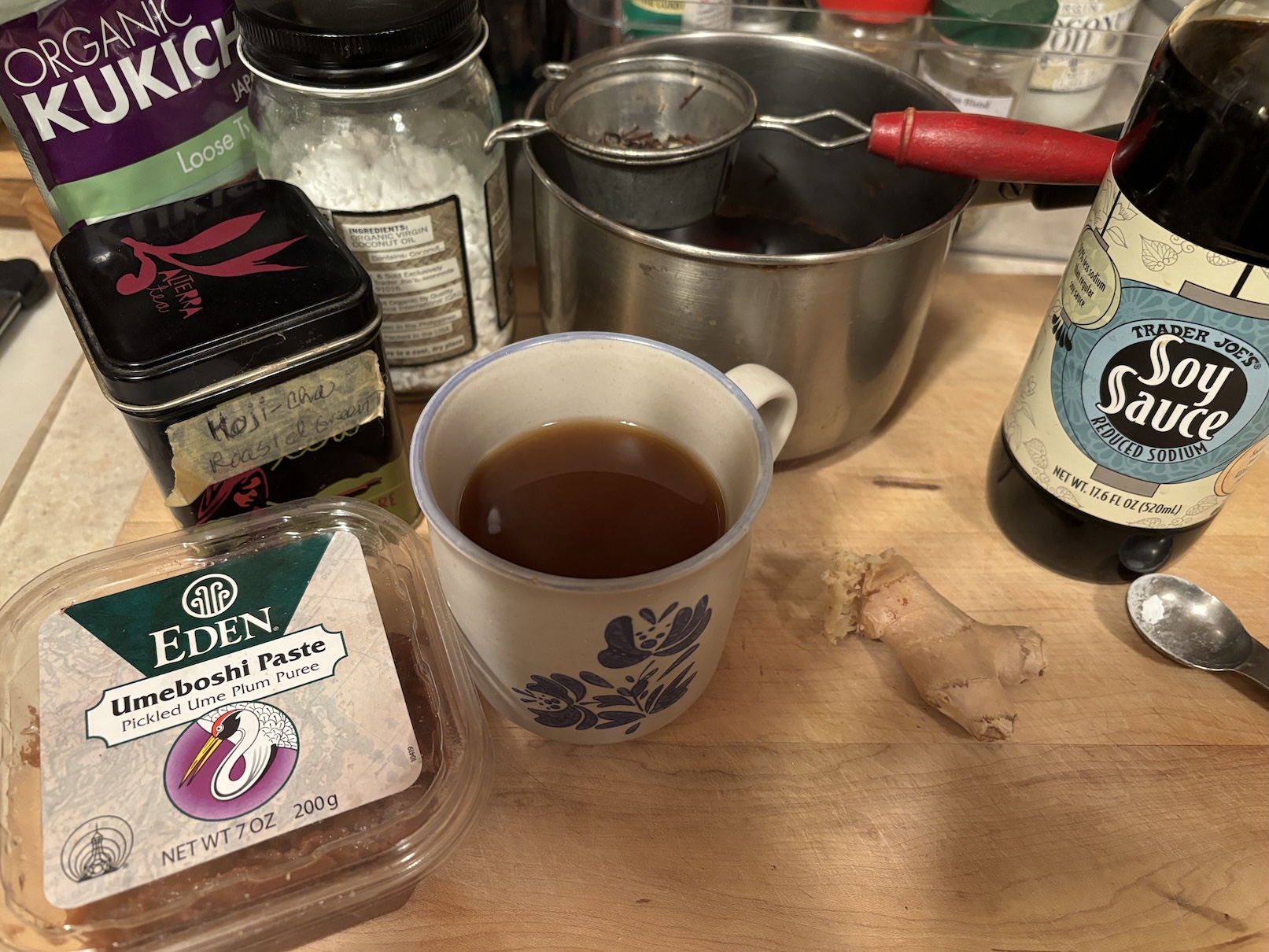
What is in this strange sounding tea?
The primary ingredients for which Ume Sho Kudzu Tea is named includes:
- Umeboshi plum or paste, a traditional Japanese fermented plum, which is both salty and sour, and is good for the liver, part of the Wood element in Chinese 5-Elements.
- Sho is short for shoyu, a high quality, unpasteurized Japanese soy sauce. The double brewing process and fermentation in aged barrels produces beneficial enzymes and probiotics, making it beneficial for gut health, and very flavorful. Ohsawa Nama Shoyu from Gold Mine Natural Food Co. is considered among the best. It's much pricier than soy sauce you'll find at your local store, but to many, it's worth the investment for the greater health benefits. San-J Tamari (pressed from making miso) and soy sauces that are naturally brewed, free of coloring and other agents can be used instead.
- Kudzu is a white chalky looking, powdered dry root used as a thickener, similar to (but healthier than) tapioca flower, white rice powder, potato starch, or cornstarch for making sauces, gravies or puddings. Read more about the uses of Kudzu Root Healing Tea in macrobiotics, and its use in Chinese herbal medicine.
What else is in Ume Sho Kudzu Tea?
- Traditional Japanese kukicha tea is fire roasted and aged twigs and tea leaf from the tea plant, also called twig tea. Kuki means "twig" and is considered the poorest tea in Japan, although it's actually the healthiest for its alkalyzing effects. Eden sells both loose twig tea and kukicha tea bags. Bulk twig tea is usually the best deal. Frontier, Star West Botanicals and others offer bulk twig tea on Amazon, or order direct from Eden, or check local Asian markets.
- Ginger is grated and squeezed to get several drops or more of the juice.
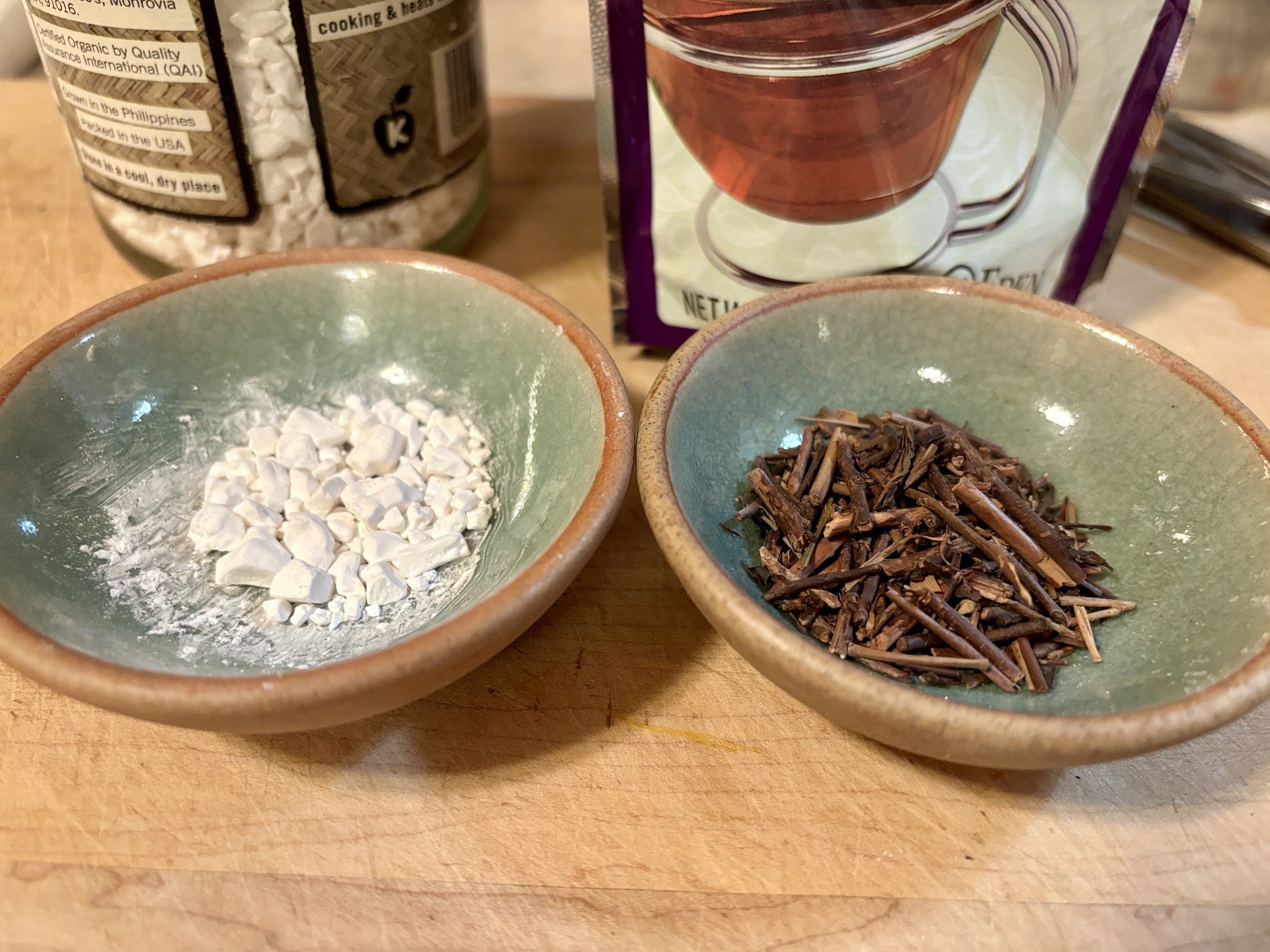 |
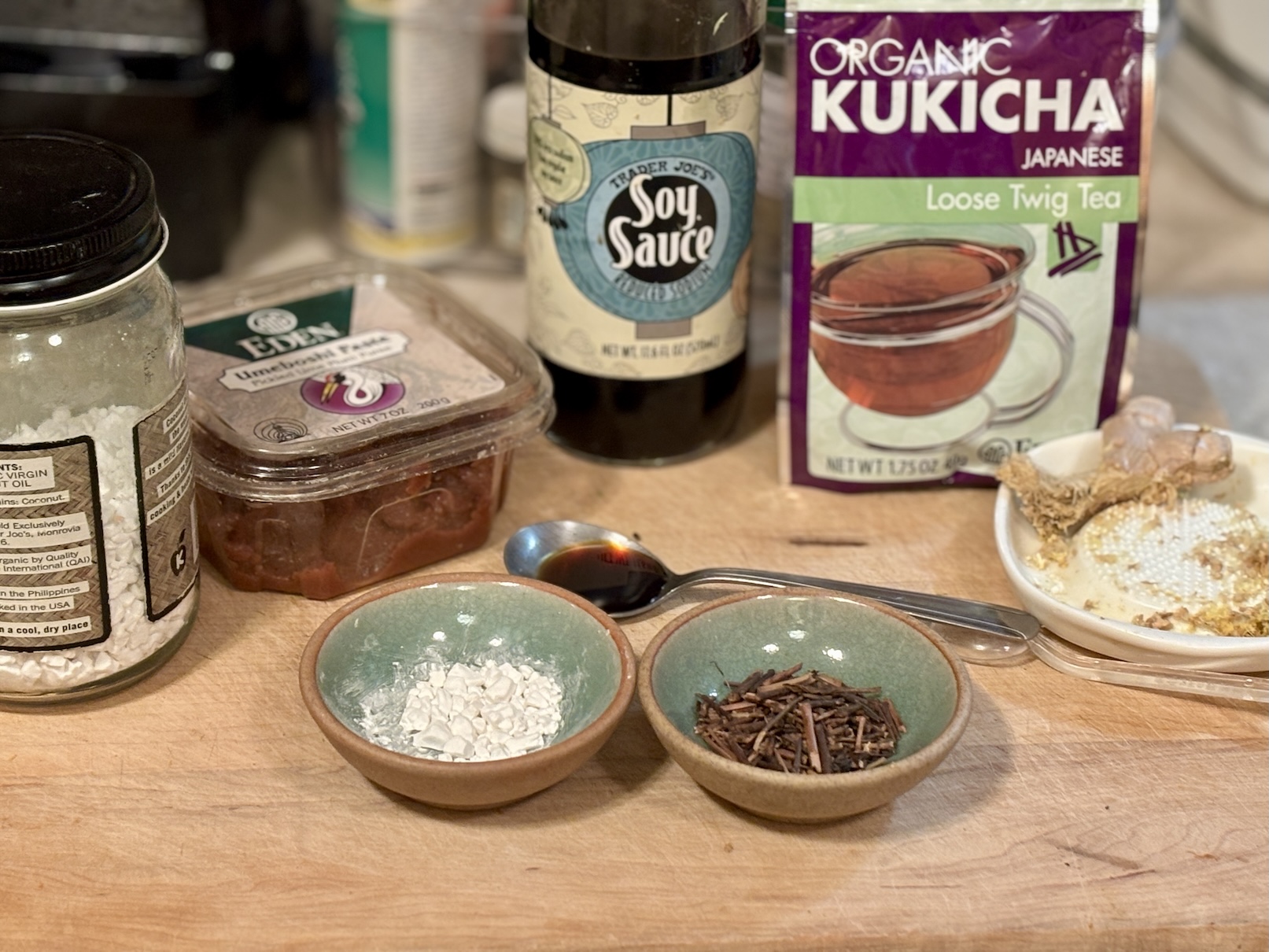 |
What are the health benefits of Ume Sho Kudzu Tea?
There are many health benefits to the individual ingredients in Ume Sho Kudzu Tea, as discussed in my Kudzu Root Healing Tea article, which are combined together for the net effect to help boost vitality.
As I wrote in The Macrobiotic Action Plan, Your MAP to Greater Heath & Happiness, Ume Sho Kudzu Tea is, "an excellent beverage to have when feeling out of sorts, run down, and on the verge of a Wind-Cold invasion... [the Chinese medicine term for the early stages of a cold, which I discuss in the book] It is very alkalizing, promotes healthy intestinal flora, and can ease digestive upsets, including stomach aches. It can also be taken for headaches, and general low energy and malaise."
To Summarize, Ume Sho Kudzu Tea can be used for:
- Low vitality and feeling of weakness
- Colds, especially at the onset
- Stomach or intestinal issues, including symptoms of influenza, and diarrhea (but don't worry, it won't make you constipated!)
- Headaches, and general malaise
- To balance overly yin conditions, including feeling cold, spacey, scattered, etc.
Watch me make Ume Sho Kudzu Tea
Ume Sho Kudzu Tea Recipe
- 1 tsp. kudzu root, typically looks like white chalky chunks, found in Asian stores (Eden brand is reliable for being of macrobiotic quality)
- 2 Tbsp. cold / cool water
- 1/4 - 1/3 tsp. umeboshi paste, or 1/4 or so of an umeboshi plum (we use Eden)
- 1/2-1 tsp. Shoyu, tamari, or naturally brewed, reduced-sodium soy sauce
- Kukicha tea or see modification, below using Bancha / Hojicha tea
Steps for making Ume Sho Kudzu Tea
- If using loose twig tea, bring about 1&1/2 Tbsp. loose tea to a boil in 4 cups of water.
- While the tea is heating up, completely dissolve kudzu root and water in your tea mug. Be sure to use cool water, as it does not dissolve well in hot water.
- Add shoyu / tamari or soy sauce, starting with 1/2 teaspoon at a time
- Grate and squeeze ginger to get several drops of juice, or add grated ginger to the tea (adding the juice eliminates the debris, but either is fine. See modifications, below.)
- Pour 1/2 - 1 cup of boiling tea through a strainer into tea mug and stir until the liquid is a clear brown. Adjust to taste by adding more shoyu if desired, and according to your condition. (See modifications, below.)
How to use and modify Ume Sho Kudzu Tea
How To Use Ume Sho Kudzu Tea
If you have any of the above symptoms, or if you have trouble getting going in the morning, and either crave or eat a lot of sweets or fruits, or have irregular bowel habits, try drinking this daily for 2 weeks, and see how you feel.
Otherwise, drink at the first signs of feeling rundown, extra tired, or if you have a cold or flu bug, headache, or stomach ache. (Or, if you know someone who is hung over, but I know that's not you, right?! :)
Modifications for Ume Sho Kudzu Tea
Sometimes Japanese Bancha Tea is used instead of twig tea. In fact, Ume Sho Ban Tea is another healing tea remedy. Bancha tea is the green tea leaves, which can be further roasted to get a roasted green tea. Bancha tea is a delightful, mild to medium flavored, deep colored green tea that is high in polyphenols and antioxidants. It's the more affordable cousin to Sencha tea, and is therefore used in restaurants and for everyday use at home. "Ban" in Japanese means "number" and "cha" means "tea." Bancha tea is made from the older leaves of the tree, after the first picking. Bancha tea can be used in lieu of twig tea.
The amount of ginger and shoyu or soy sauce will vary depending on one's condition, which would be discussed during a macrobiotic consultation. Generally speaking, this is especially beneficial for those with a more Yin imbalance. That said, it's great for treating any of the symptoms mentioned above. As a general rule, go according to taste.
- If you tend to crave salt, you may prefer to use 1 tsp. of shoyu or soy sauce.
- If you tend to crave sweets, and/or if you eat a lot of potassium-rich foods, raw foods, fruits and juices, you may want to try a full teaspoon of shoyu / soy sauce.
- If you feel really thirsty afterwards, then use 1/2 teaspoon the next day.
- If you have an upset stomach, or weak digestion, more ginger can be added. If ginger gives you a feeling of heartburn, you can place the grated ginger into the strainer, so the ginger essence gets into your tea, with less actual ginger, as our dear friend and long-time follower of macrobiotics Sylvia Ruth Gray does when making her Ume Sho Kudzu Tea.
- Dried ginger has a more warming effect. Only use a pinch if you don't have fresh ginger. Possibly a bit more if feeling really chilled, however, omit if you have a fever.
If the kudzu did not dissolve well, it will be starchy / cloudy looking. Simply pour all the tea ingredients into a pot, and bring to a boil, stirring until the kudzu is dissolved, and the tea is more clear brown.
(Look for my video showing how to make Ume Sho Kudzu Tea coming soon!)
More articles about macrobiotics you may be interested in...
- The Macrobiotic Action Plan, Your MAP to Greater Health & Happiness
- My Macrobiotic Weight Loss
- My Macrobiotic Meals for Weight Loss
- Macrobiotic / Plant-Based Tips for Weight Loss
- Our First Intro to Macrobiotics + Early Pioneers
- Macrobiotic Page linking all macrobiotic related articles
And, a Couple More Healing 'Brews'
Be sure to download my FREE Ebooks, and order your copy of The Macrobiotic Action Plan!
Want to get started eating a healthy balanced vegan macrobiotic diet / or a simple plant-based diet?
